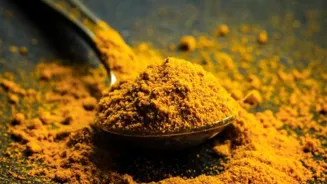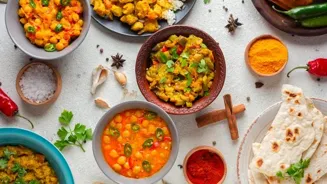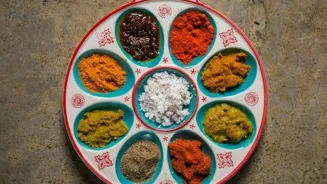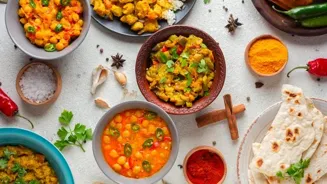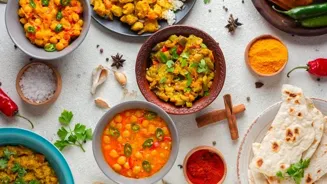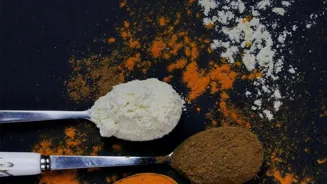Discover the essence of Indian cuisine with 10 popular ingredients! Explore their flavors and culinary uses
India, a land of vibrant culture and diverse traditions, boasts a cuisine that is as rich and varied
as its landscape. At the heart of this culinary tapestry lies a selection of ingredients, each with a unique flavor and a story to tell.
These ingredients, passed down through generations, are not just components of a dish; they are the essence of Indian cooking. From the fragrant spices to the humble lentils, each plays a significant role in creating the symphony of flavors that define Indian cuisine.
Let's explore ten popular Indian ingredients and their versatile culinary uses.
Turmeric: The Golden Healer
Turmeric, often referred to as the "golden spice," holds a revered position in Indian kitchens and traditional medicine.
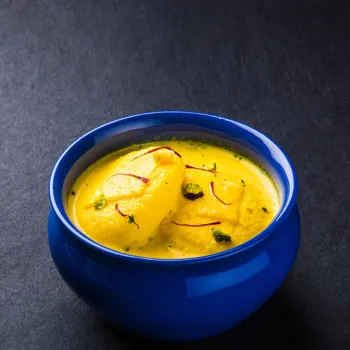
This vibrant yellow powder, derived from the root of the Curcuma longa plant, is more than just a coloring agent; it's a powerhouse of health benefits and a key flavor component in countless dishes.
Turmeric's warm, earthy flavor adds depth to curries, lentil stews (dal), and vegetable preparations. Its anti-inflammatory properties make it a popular addition to milk (haldi doodh) for its soothing effects. Turmeric is also used in religious ceremonies.
Turmeric is a versatile ingredient that enhances both the flavor and nutritional value of Indian cuisine.
Ginger: The Zesty Root
Ginger, with its pungent aroma and spicy-sweet flavor, is a staple in Indian cooking. This versatile root is used in both fresh and dried forms, adding a zing to a wide array of dishes. Ginger is an essential ingredient in many curries, stir-fries, and soups.
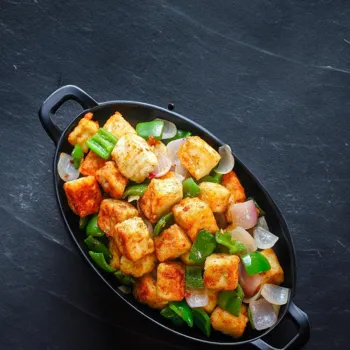
It is also used to flavor beverages like tea and ginger ale. Known for its digestive and anti-inflammatory properties, ginger is often used in traditional remedies. Ginger adds a refreshing and warming element to Indian cuisine. It is one of the most important ingredient and used for many things.
Garlic: The Aromatic Bulb
Garlic, with its strong and pungent flavor, is a cornerstone of Indian cuisine. This aromatic bulb adds depth and complexity to many dishes, from curries and dals to vegetable preparations and marinades.
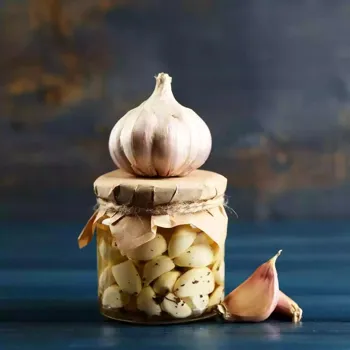
Garlic is often sautéed in oil or ghee to release its flavor, creating a fragrant base for cooking. Known for its medicinal properties, garlic is believed to have anti-bacterial and anti-inflammatory effects.
Garlic is an indispensable ingredient that enhances the flavor and health benefits of Indian food. It is an important ingredient and used for almost all dishes.
Chili Peppers: The Fiery Spice
Chili peppers, in their various forms, are the source of heat and spice in Indian cuisine. From the mild Kashmiri chili to the fiery Bhut Jolokia, there is a chili pepper to suit every palate.
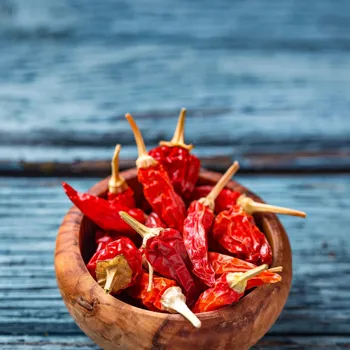
Chili peppers are used fresh, dried, or powdered, adding a vibrant color and intense flavor to curries, pickles, chutneys, and sauces. The level of spiciness depends on the type of chili used and the quantity added to the dish.
Chili peppers are an integral part of Indian food, providing a crucial element in defining its signature taste.
Cumin: The Earthy Seed
Cumin, with its warm and earthy flavor, is a commonly-used spice in Indian cooking. The seeds themselves can be used whole. Cumin is used to flavor curries, rice dishes, and stews. Known for its digestive properties, cumin is often used in Ayurvedic medicine.
Cumin is a versatile spice that adds depth and complexity to Indian cuisine. Its flavors are very rich and tasty.
Coriander: The Fragrant Herb
Coriander, also known as cilantro, is a versatile herb used extensively in Indian cuisine. Both the leaves and seeds of the coriander plant are used in cooking. The fresh leaves add a bright and citrusy flavor to dishes, while the dried seeds provide a warm and slightly sweet taste.
Coriander is used as a garnish, a flavoring agent in curries and chutneys, and an ingredient in spice blends. Known for its cooling properties, coriander is often used in summer dishes. Coriander adds a refreshing and aromatic touch to Indian food.
Mustard Seeds: The Pungent Pop
Mustard seeds, with their pungent and nutty flavor, are an important ingredient in Indian cuisine, particularly in South Indian cooking. These tiny seeds are often tempered in hot oil or ghee, causing them to pop and release their distinctive flavor.
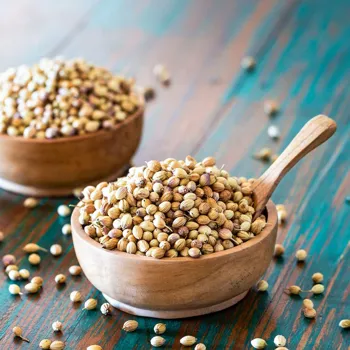
Mustard seeds are used to flavor curries, pickles, and chutneys. They are also used in traditional medicines. Mustard seeds add a unique and zesty element to Indian cooking.
Lentils: The Protein Powerhouse
Lentils, in a variety of colors and sizes, are a staple in Indian cuisine, providing a rich source of protein and fiber. From the creamy masoor dal to the hearty chana dal, lentils are used to prepare a wide range of dishes, including dals, soups, stews, and snacks.
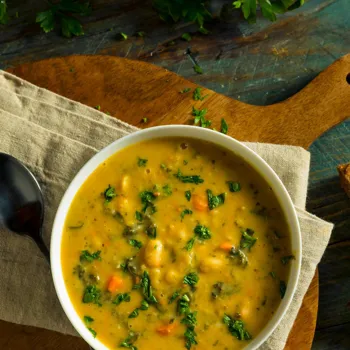
Lentils are often seasoned with spices, herbs, and vegetables, creating flavorful and nutritious meals. Lentils are an indispensable part of Indian food. It gives amazing health benefits.
Rice: The Staple Grain
Rice is a staple grain in Indian cuisine, forming the base for countless meals. From the fragrant basmati rice to the short-grained sona masoori, there are many varieties of rice used in Indian cooking. Rice is served plain, flavored with spices and herbs.
Rice is a versatile ingredient that complements a variety of dishes. It is an important part of the food and one can have it plain or along with dal.
Flour (Atta): The Foundation of Breads
Wheat flour, or atta, is the foundation of Indian breads, such as roti, chapati, and naan. These unleavened or leavened breads are an integral part of Indian meals, served alongside curries, dals, and vegetable dishes.
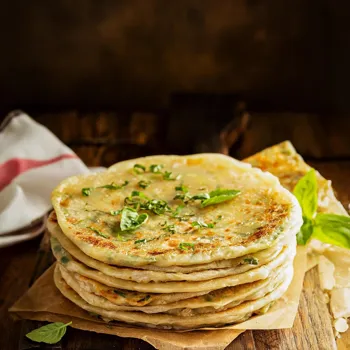
Atta is kneaded with water to form a soft dough, which is then rolled out and cooked on a griddle or in a tandoor oven. Indian breads are a versatile and essential component of Indian cuisine.

